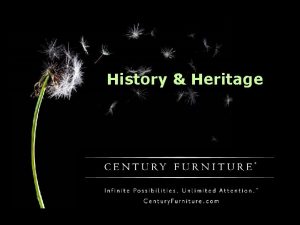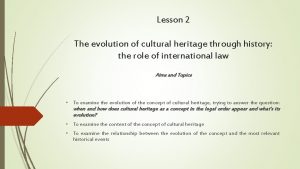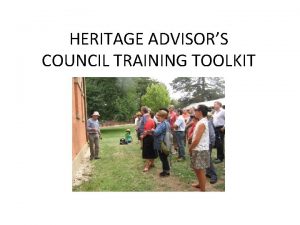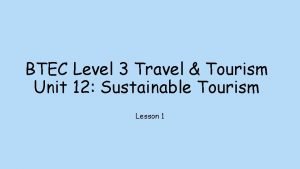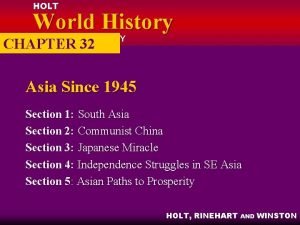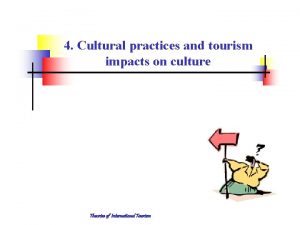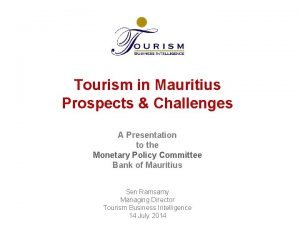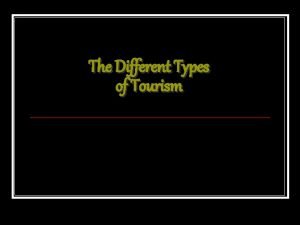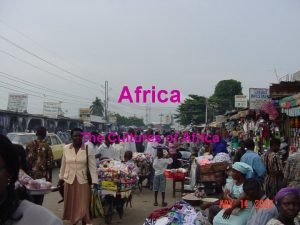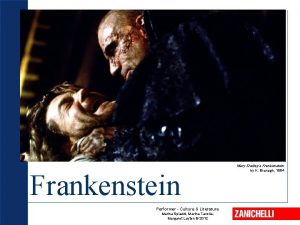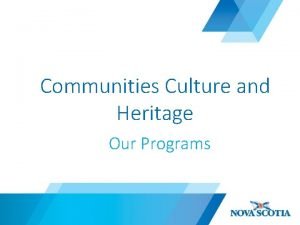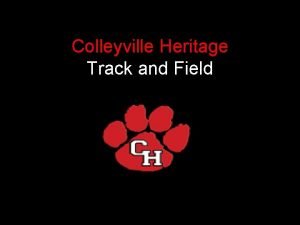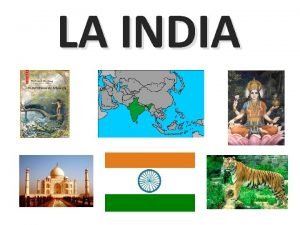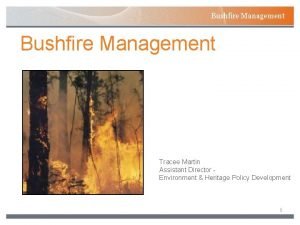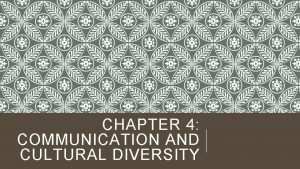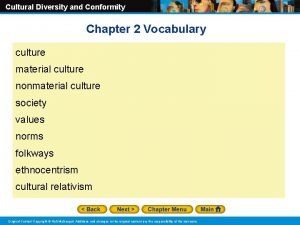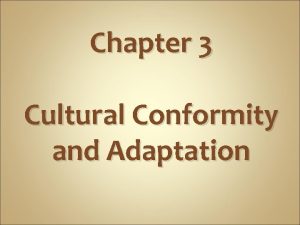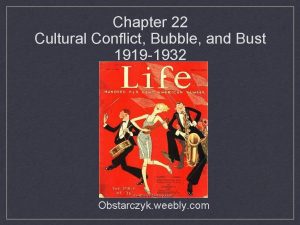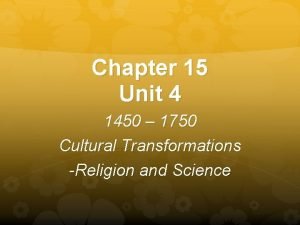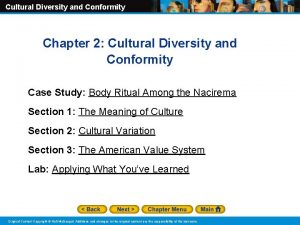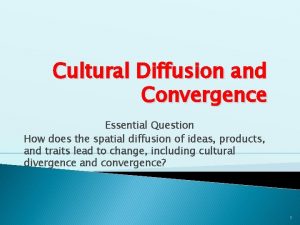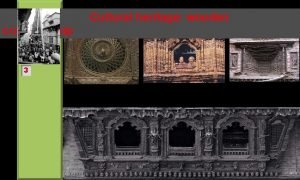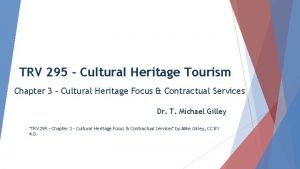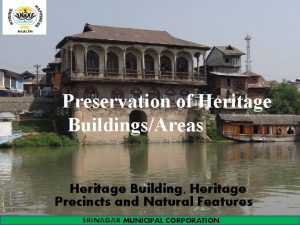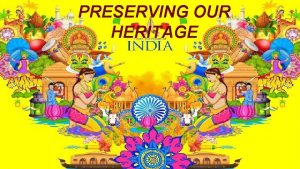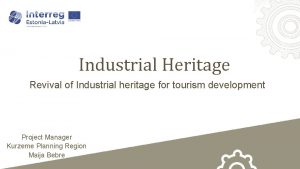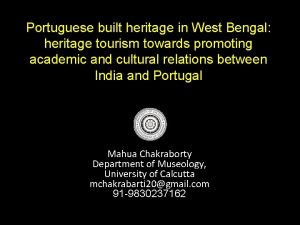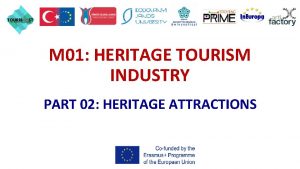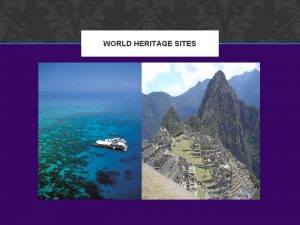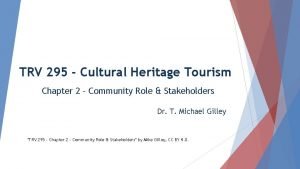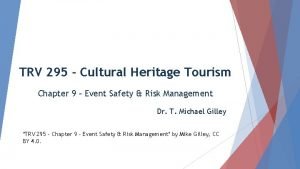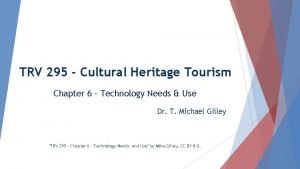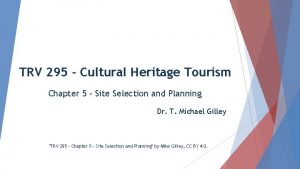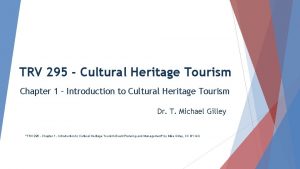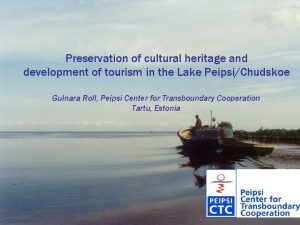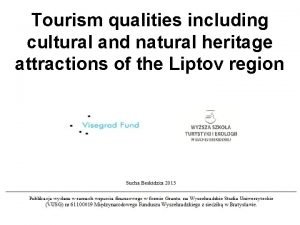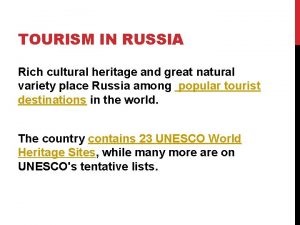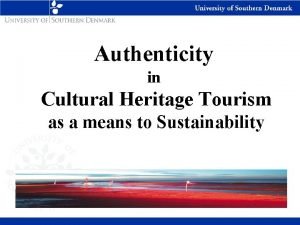Chapter 11 Cultural and Heritage Tourism Its Tourism





































- Slides: 37

Chapter 11 Cultural and Heritage Tourism It’s Tourism: Concepts and Practices John Walker Copyright © 2011 by Pearson Education, Inc. publishing as Pearson [imprint]

Objectives • After reading and studying this chapter, you should be able to: – Define cultural tourism – Discuss the impact of tourism on host communities – Explain benefits of heritage tourism and list some challenges that comes with it – Describe the four steps to a comprehensive heritage program It’s Tourism: Concepts and Practices John Walker Copyright © 2011 by Pearson Education, Inc. publishing as Pearson [imprint]

Cultural Tourism • Defined as: – Tourist visits “motivated wholly or in part by interest in the historical, artistic, scientific or lifestyle/heritage offerings of a community, region, group, or institution” • Recognized as a form of tourism for a long time – Gaining popularity It’s Tourism: Concepts and Practices John Walker Copyright © 2011 by Pearson Education, Inc. publishing as Pearson [imprint]

Cultural Tourism (cont’d. ) • LORD Cultural Resources study: – Not every cultural product is willing, ready, or able to attract tourists – Not every person is interested in culture – There are different degrees of consumer motivation for cultural tourism It’s Tourism: Concepts and Practices John Walker Copyright © 2011 by Pearson Education, Inc. publishing as Pearson [imprint]

Cultural Tourism (cont’d. ) • Make up of tourists: – Center of the circle: • People greatly motivated by culture – Second circle: • People motivated in part by culture – Third circle: • Culture is an “adjunct” to another motivation It’s Tourism: Concepts and Practices John Walker Copyright © 2011 by Pearson Education, Inc. publishing as Pearson [imprint]

Cultural Tourism (cont’d. ) – Outer circle: • Accidental cultural tourist – Outside the circles: • Persons who would not attend a cultural attraction or event under any circumstances It’s Tourism: Concepts and Practices John Walker Copyright © 2011 by Pearson Education, Inc. publishing as Pearson [imprint]

Cultural Tourism (cont’d. ) • Profile of the cultural tourism market – Age 45 and older – More highly educated than the general public, earns more and spends more money – Packs more activities into more frequent trips – Looks for authenticity, adventure, and meaning – Has high expectations – Expects tourism industry to contribute to sustainability – Increasingly uses the Internet It’s Tourism: Concepts and Practices John Walker Copyright © 2011 by Pearson Education, Inc. publishing as Pearson [imprint]

Cultural Tourism (cont’d. ) • Motivating factors in travel: – Understanding culture: 88% – Going to a location with natural beauty: 73% – Gaining a new perspective on life: 72% – Visiting cultural, historical, and natural treasures: 50% – Getting off the beaten track: 45% It’s Tourism: Concepts and Practices John Walker Copyright © 2011 by Pearson Education, Inc. publishing as Pearson [imprint]

Tourism Impacts on Culture • General public and tourism experts: – Do not seem to agree on whether tourism has a positive or negative impact on culture • Dr. Philip Mc. Kean, culture change brought by tourism strengthened several of folk traditions • Bali jet airport opening helped locals sell hand made goods • Some locals curse tourists for disrupting their native lifestyle It’s Tourism: Concepts and Practices John Walker Copyright © 2011 by Pearson Education, Inc. publishing as Pearson [imprint]

Tourism Impacts (cont’d. ) • Tourism and art – Effects on the arts of developing regions have been debated • Favorable in many places selling arts and crafts • Revitalized peasant music and folk dancing • Gave African carving a new stimulus – Placing such art in hotel lobbies and guest rooms increases demand It’s Tourism: Concepts and Practices John Walker Copyright © 2011 by Pearson Education, Inc. publishing as Pearson [imprint]

Tourism Impacts (cont’d. ) • Today: – Machinery replaces the hand in making cheap imitations – Plastic copies of art substitute for the authentic – Markets actually exist for both the authentic and copies It’s Tourism: Concepts and Practices John Walker Copyright © 2011 by Pearson Education, Inc. publishing as Pearson [imprint]

Tourism Impacts (cont’d. ) • Artists in developing countries have responded to the souvenir market – In many cases improved indigenous art – New art forms continue to evolve • State-run craft shops – Tend to “authenticate” the product and ensure its quality It’s Tourism: Concepts and Practices John Walker Copyright © 2011 by Pearson Education, Inc. publishing as Pearson [imprint]

Heritage Tourism • Tourism that respects natural and built environments – The heritage of the people and place • Tourism combined with preservation has not always been popular – Tourism and preservation can work together to mutual advantage It’s Tourism: Concepts and Practices John Walker Copyright © 2011 by Pearson Education, Inc. publishing as Pearson [imprint]

Heritage Tourism (cont’d. ) • Heritage was for years a forgotten element in tourism planning and policy – Now, a key element in decision-making • How irreplaceable resources are to be used today, yet conserved for generations of tomorrow • Sheer volume of tourism may, if not properly managed, conflict with and defeat the conservation effort It’s Tourism: Concepts and Practices John Walker Copyright © 2011 by Pearson Education, Inc. publishing as Pearson [imprint]

Heritage Tourism (cont’d. ) • Benefits of preservation: – Protect assets for present and future generations • First gathered momentum in the U. S. when Cunningham initiated efforts to save Mount Vernon in 1853 • National Historic Preservation Act of 1966 motivated many to continue the mission It’s Tourism: Concepts and Practices John Walker Copyright © 2011 by Pearson Education, Inc. publishing as Pearson [imprint]

Heritage Tourism (cont’d. ) • Today, people are beginning to recognize the: – Need to preserve our irreplaceable heritage – Direct economic benefits it can bring • Torn down building is destroyed • Restored building continues its useful life It’s Tourism: Concepts and Practices John Walker Copyright © 2011 by Pearson Education, Inc. publishing as Pearson [imprint]

Heritage Tourism (cont’d. ) • Challenges: – Ensuring increased visitation does not destroy the qualities that attract tourists – Tourism puts demands on infrastructure and public services – Tourists expectations of quality products and services – No “Band-Aids” • Essential to protect assets for the long term It’s Tourism: Concepts and Practices John Walker Copyright © 2011 by Pearson Education, Inc. publishing as Pearson [imprint]

Heritage Tourism (cont’d. ) • Finding the fit between community and tourism – Local circumstances determine what an area needs to do and can do – Common features for successful programs include: • Widespread local acceptance • Meet recognized local needs • Realistic goals It’s Tourism: Concepts and Practices John Walker Copyright © 2011 by Pearson Education, Inc. publishing as Pearson [imprint]

Heritage Tourism (cont’d. ) • Four steps to a comprehensive heritage Program: 1. 2. 3. 4. Assessing the potential Planning and organizing Preparing, protecting, and managing Marketing for success It’s Tourism: Concepts and Practices John Walker Copyright © 2011 by Pearson Education, Inc. publishing as Pearson [imprint]

Assessing the Potential • Planners must: – Not underestimate the drawing power of cultural resources – Keep in mind that natural resources do not need be right next door to serve as a resource • Tourists will take a days drive It’s Tourism: Concepts and Practices John Walker Copyright © 2011 by Pearson Education, Inc. publishing as Pearson [imprint]

Assessing Potential (cont’d. ) • Community awareness may uncover hidden treasures • Once key destinations are chosen planners should prioritize them – Purpose is to scout possibilities It’s Tourism: Concepts and Practices John Walker Copyright © 2011 by Pearson Education, Inc. publishing as Pearson [imprint]

Assessing Potential (cont’d. ) • Key questions planners must answer: – What is the local preservation organization’s view of tourism? – Do local businesses support the preservation of heritage? – Are people enthusiastic about developing heritage sites and willing to make a long-term financial commitment? – Do organizations actively seek funds? It’s Tourism: Concepts and Practices John Walker Copyright © 2011 by Pearson Education, Inc. publishing as Pearson [imprint]

Planning and Organizing • How to construct a plan: – Establish the mission – Review the assessment and determine the appropriate goals – Develop “results-oriented” objectives for each goal – List specific projects for each goal It’s Tourism: Concepts and Practices John Walker Copyright © 2011 by Pearson Education, Inc. publishing as Pearson [imprint]

Planning (cont’d. ) • Prepare an action plan that includes the following for each project: – Date of completion – Specific tasks to accomplish to complete the project – A budget and how it will be funded – The person responsible for the project It’s Tourism: Concepts and Practices John Walker Copyright © 2011 by Pearson Education, Inc. publishing as Pearson [imprint]

Planning (cont’d. ) • Appoint committees with designated chairs to implement components • Monitor progress against the timeline and mission • Plan any fund-raising efforts the group wants to undertake It’s Tourism: Concepts and Practices John Walker Copyright © 2011 by Pearson Education, Inc. publishing as Pearson [imprint]

Preparing (cont’d. ) • Look into the future and the present – Make choices that will improve the community in the long-term • Quality of service the community provides • Lasting impression tourists take home – It may be necessary to implement a community-wide hospitality training program It’s Tourism: Concepts and Practices John Walker Copyright © 2011 by Pearson Education, Inc. publishing as Pearson [imprint]

Preparing (cont’d. ) • Considerations when developing a training program: – Develop a comprehensive preservation plan • Gives participants a way to view and protect its historic resources overall It’s Tourism: Concepts and Practices John Walker Copyright © 2011 by Pearson Education, Inc. publishing as Pearson [imprint]

Preparing (cont’d. ) – Use the designation of historic significance to protect historic resources – Zoning specifies where particular land uses and densities are appropriate – Set up a design review board to administer the guidelines – Require demolition review – Develop a sign ordinance It’s Tourism: Concepts and Practices John Walker Copyright © 2011 by Pearson Education, Inc. publishing as Pearson [imprint]

Preparing (cont’d. ) – Set up an easement program – Establish a revolving loan fund to recycle the money from completed projects – Create local incentives to encourage preservation – Integrate tourism with other forms of economic development It’s Tourism: Concepts and Practices John Walker Copyright © 2011 by Pearson Education, Inc. publishing as Pearson [imprint]

Marketing for Success • Goals: – Reach the target market – Seize opportunities to partner with local, regional, state, or national groups • Marketing plan components: – Public relations – Advertising and graphic materials – Promotions It’s Tourism: Concepts and Practices John Walker Copyright © 2011 by Pearson Education, Inc. publishing as Pearson [imprint]

Marketing (cont’d. ) • Public relations includes: – Short spots on radio and television to publicize sites and events – Documented success stories – Organizing a photo/slide library – Setting up a speaker’s bureau It’s Tourism: Concepts and Practices John Walker Copyright © 2011 by Pearson Education, Inc. publishing as Pearson [imprint]

Marketing (cont’d. ) • Advertising: – Can be costly, yet can be very beneficial – Requires: • Creating convincing messages and supporting visuals • Appropriate media placement • Responding to inquiries • Measuring effectiveness It’s Tourism: Concepts and Practices John Walker Copyright © 2011 by Pearson Education, Inc. publishing as Pearson [imprint]

Marketing (cont’d. ) • When advertising: – It is important to match the message with the site and the budget allotted • Announcements can be put in newspapers and magazines, on radio and television, and on the Internet • Print advertising is generally less expensive than the electronic methods It’s Tourism: Concepts and Practices John Walker Copyright © 2011 by Pearson Education, Inc. publishing as Pearson [imprint]

Marketing (cont’d. ) • “Co-op” advertising: – Good way to share ad campaign costs • Multiple partners cooperate to produce advertisements or special sections dedicated to their area • Magazines and newspapers provide special rates for advertising participants It’s Tourism: Concepts and Practices John Walker Copyright © 2011 by Pearson Education, Inc. publishing as Pearson [imprint]

Marketing (cont’d. ) • Develop various graphic materials communicating information – Brings forth to targeted audiences the image the community is trying to portray – Color scheme or unique design element (logo) appears throughout material • Helps to define an image It’s Tourism: Concepts and Practices John Walker Copyright © 2011 by Pearson Education, Inc. publishing as Pearson [imprint]

Marketing (cont’d. ) • Brochures: – Introduce visitors to the area’s attractions – Can also be used for other purposes (e. g. , during trade shows or special events) – Should be displayed at key locations – If targeting a specific group, specialized brochures should be developed It’s Tourism: Concepts and Practices John Walker Copyright © 2011 by Pearson Education, Inc. publishing as Pearson [imprint]

Marketing (cont’d. ) – Group services directory: – Provides information such as where to stay, eat, tours, etc. • Signs: – Should be created and placed where visitors will see them – Should be legible and informative • Including international symbols It’s Tourism: Concepts and Practices John Walker Copyright © 2011 by Pearson Education, Inc. publishing as Pearson [imprint]
 Sapratibandha daya and apratibandha daya
Sapratibandha daya and apratibandha daya Obstructed heritage in hindu law
Obstructed heritage in hindu law World heritage is our heritage slogan
World heritage is our heritage slogan Intangible cultural heritage and sustainable development
Intangible cultural heritage and sustainable development Cultural heritage meaning
Cultural heritage meaning Intangible cultural heritage in the philippines ppt
Intangible cultural heritage in the philippines ppt Constantine was the emperor who ______.
Constantine was the emperor who ______. Beehive bendigo
Beehive bendigo Unit 12 travel and tourism
Unit 12 travel and tourism Chapter 16 section 1 russia and the western republics
Chapter 16 section 1 russia and the western republics Human heritage chapter 2
Human heritage chapter 2 Human heritage chapter 4
Human heritage chapter 4 Human heritage chapter 32
Human heritage chapter 32 Human heritage chapter 28
Human heritage chapter 28 Cultural motivators in tourism
Cultural motivators in tourism Cultural drift
Cultural drift Cultural tourism in mauritius
Cultural tourism in mauritius Mass tourism vs alternative tourism
Mass tourism vs alternative tourism The emigree analysis
The emigree analysis Its halloween its halloween the moon is full and bright
Its halloween its halloween the moon is full and bright East africa has great cultural diversity because of its -
East africa has great cultural diversity because of its - Frankenstein plot zanichelli
Frankenstein plot zanichelli Communities culture and heritage
Communities culture and heritage Colleyville heritage track and field
Colleyville heritage track and field Indian culture and heritage
Indian culture and heritage The tangible and intangible heritage in my local area
The tangible and intangible heritage in my local area Deqms
Deqms When a train increases its velocity, its momentum
When a train increases its velocity, its momentum Sunny cloudy rainy windy
Sunny cloudy rainy windy If its square its a sonnet
If its square its a sonnet Its not easy but its worth it
Its not easy but its worth it Chapter 4 communication and cultural diversity
Chapter 4 communication and cultural diversity Cultural diversity and conformity section 3
Cultural diversity and conformity section 3 Cultural diversity and conformity chapter test form a
Cultural diversity and conformity chapter test form a Chapter 22 cultural conflict bubble and bust
Chapter 22 cultural conflict bubble and bust Ursula de jesus ap world history
Ursula de jesus ap world history Cultural diversity and conformity
Cultural diversity and conformity Cultural convergence
Cultural convergence


